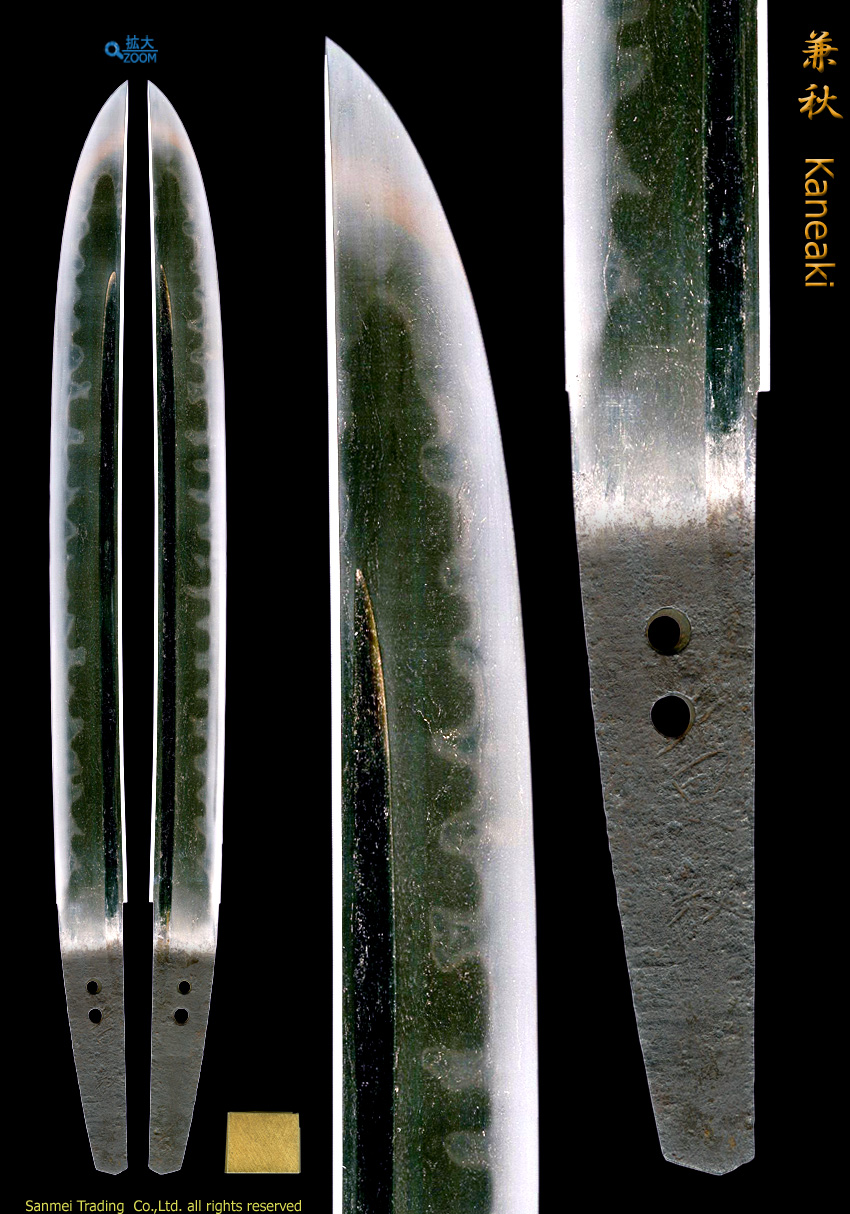Length of cutting edge 29.4cm Curvature 0.2cm Width of base 25.4mm Thickness of base 5.4mm
This construction was specialized for stabbing and designed for supplement purpose to a Katana during the Warning States period. (click HERE for higher resolution image of the entire blade)
Forging(Hada): Forging is Itame-hada in general mixing in flowing Masame ware both on Mune side and hardening boundary line. The entire Hiraji is covered in of whitish reflection of Shirake-Utsuri over the surface.
Temper(Hamon): Hamon is rather on tighter side Nioi metal granules base, clear Choji of tassel shape which is constricted in the middle, called Kenbo-midare and box-like shape. In the interior of temper there works with deep Noi mist-like crystalline area.
Temper of tip(Boshi): Boshi forms irregular shape like a side view of Jizou stone stature, medium circles then turns deeply with small Gunome zigzag line.
Tang(Nakago): Nakago is in UBU original. Two Mekugiana peg retaining holes. Higaki of crossing filemarks. Back ridge of Nakago is flat with greatly Katte-sagari filemark. The Nakago is relatively smart in ratio of Nagasa, ends as uneven V-shape heel so called Kengyo. Two large character KANEAKI 兼秋 is chiselled in classical grace on below the Mekugi-ana.
The subject Tanto was made by KANEKI 兼秋 from Seki, Mino province in the middle of 16th C.
According to a reference Nihonto-Meikan, two generations of KANEAKI 兼秋 were active in Seki, Mino province. Earlier KANEAKI in Eisho era (1504-) and the second generation KANEAKI was active in Tenbun (1532-) who is said as a son of KANEHARU 兼春.
Hamon of both sides has an artistic tendency to match equally, Hardening hamon of Boshi forms like a side view of Jizou stone stature and steel gives of diffused Utsuri that comes from frosted whitish reflection - this Tanto clearly has those features quite its own of Mino tradition on the latter hald of Muromachi period.
Preserved in Shirasaya plain wood mounting, Gold foiled Habaki collar.
Good polish/Condition scale: excellent - very good (using a scale of mint-excellent-very good-good-fair-poor).
reference data :
Suzuki Takuo/Sugiura Yoshiyuki, Muromachiki Mino-Toko-no kenkyu, Ribun-shuppan 2006
Tokuno kazuo, Mino-to taikan, 1975
Kano Tomomichi, Mino-to Oshigata-shu, 1977


